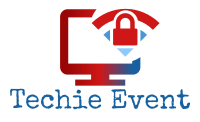In the vast ecosystem of digital marketing and search engine optimization (SEO), backlinks continue to play a crucial role in boosting a website’s authority and visibility. However, not all backlink opportunities are created through outreach or guest blogging. A hidden gem that many businesses overlook is the untapped value lying in broken links and unlinked brand mentions. This is where reclaiming links with 404 and mentions can bring remarkable gains to your SEO efforts.
The Value of Backlink Reclamation
Reclaiming links involves identifying existing linking opportunities that were once active or should be active and turning them back into valuable backlinks. There are two primary ways to achieve this:
- 404 Link Reclamation – This refers to finding backlinks that point to a broken or deleted page on your site (resulting in a 404 error) and either redirecting the link to a live page or asking the linking site to update the URL.
- Brand Mention Reclamation – When someone mentions your brand online but doesn’t link back to your website, you can reach out and request they add a link to that mention.
Both methods help turn passive mentions or lost links into usable, authority-boosting backlinks that improve your SEO profile and restore link equity.
404 Link Reclamation: Fixing Broken Opportunities
Every site, especially older or content-rich ones, eventually deals with broken links. Maybe you removed an outdated product page, renamed a blog post URL, or purged low-quality content. Over time, other websites may have linked to those pages, and when those links are clicked, they now result in a 404 error.
This breaks the flow of link juice, frustrates users, and may even hurt your SEO rankings. Reclaiming these broken links can be as impactful as gaining fresh, new backlinks—sometimes even more so, since they’re already pointing to your domain.
How to Find and Reclaim 404 Links
- Identify Broken Backlinks – Use tools like Ahrefs, SEMrush, or Screaming Frog. In Ahrefs, for instance, go to Site Explorer > Broken Backlinks to spot which broken pages have incoming links.
- Determine Relevance – Decide whether the broken page still needs attention. Can it be restored, redirected, or replaced with new content?
- Fix with Redirects – If the content can’t be revived, use a 301 redirect to send users (and link equity) to a relevant alternative URL.
- Outreach to Webmasters – For high-value links, consider contacting the referring domain’s webmaster to update their link to point to the correct or new URL. This also helps improve their site’s usability.
With some regular maintenance, you can significantly recoup lost authority from these overlooked links.

Reclaiming Unlinked Mentions
Every time your brand is mentioned online without a hyperlink, it’s a missed SEO opportunity. Brand mention reclamation is the art of tracking such instances and turning them into backlinks. It’s one of the most straightforward outreach efforts because the author is already aware of your brand and finds it relevant.
Why Are Mentions Important?
Mentions—linked or unlinked—are signs of brand awareness and indicate you’re becoming an authority in your space. However, only linked mentions pass on SEO value. That’s why identifying these unlinked mentions and converting them into live links can quickly improve your domain’s authority with minimal content creation or link building effort.
How to Find and Reclaim Unlinked Mentions
- Set Up Alerts – Tools like Google Alerts, Mention, and Brand24 allow you to track mentions of your brand, products, or even key staff. Set up variations of your name to cast a wide net.
- Use SEO Tools – Tools like Ahrefs and SEMrush also let you find unlinked brand mentions. With Ahrefs, try the Content Explorer feature and search for mentions of your brand without a link.
- Review and Qualify Earned Mentions – Not every mention is worth reclaiming. Focus on authoritative, relevant sites where a backlink will genuinely help your SEO or branding efforts.
- Contact the Right Person – Reach out with a brief, polite message thanking them for the mention and asking if they could turn your name into a link. You can also offer a relevant link or resource to make the update easier for them.
Pro-tip: Reference where the mention is (URL and paragraph) and suggest where the link would naturally fit. Reduce friction, and success rates will improve dramatically.

Best Practices for Link Reclamation Outreach
Whether you’re fixing 404 links or turning mentions into backlinks, your outreach success depends on your approach. Here are some best practices:
- Be Personal and Relevant – Don’t send generic emails. Personalize your outreach by referencing the content and the value of linking correctly to your brand.
- Be Brief and Respectful – Get to the point and be respectful of their time. Webmasters and editors are busy, so clarity and brevity go a long way.
- Explain the Benefit – Show how fixing the link improves user experience or prevents visitors from landing on a broken page.
- Follow Up (Politely) – If you don’t receive a response after a week or two, send a polite follow-up email. Sometimes your initial message just gets buried.
Automate and Scale Your Efforts
Manual link reclamation can be time-consuming, especially for large or well-established brands. Fortunately, many tools can help you automate parts of the process:
- BuzzSumo – Great for tracking mentions across blogs and news sites.
- Screaming Frog – Ideal for crawling your own site and finding 404 status pages.
- Hunter.io + Gmail Sequences – Helps automate outreach and follow-up emails when you’ve found unlinked mentions.
By integrating these tools into your SEO workflow, you can consistently monitor, detect, and act on new reclaiming opportunities.
Don’t Forget Images, PDFs, and Embeds
Most marketers think only of webpage links for these tactics. But 404 errors can affect assets like downloadable PDFs, infographics, and images too. Meanwhile, many presentations or embeds shared externally may contain your branding but not link back to your site. Track and reclaim these items just as rigorously as standard pages.
Use Google Search queries like site:example.com filetype:pdf to find resources you may have forgotten about. Monitor external platforms where your visuals appear, and look for mentions of your content embedded on third-party sites.
A Long-Term Link Strategy
Link reclamation isn’t a one-off task—it’s an ongoing component of a sustainable SEO strategy. By regularly auditing your backlinks, tracking mentions, and performing outreach, your site can continue to grow its authority without needing to produce constant new content or aggressively seek links from scratch.
It’s a smart, resource-efficient way to retain your digital equity, improve site usability, and build stronger relationships within your niche. Plus, it subtly reinforces your brand’s presence across the web.
Final Thoughts
If you’ve already invested in building great content, engaging with your niche, and establishing your brand, then you’ve likely already created the opportunities for valuable backlinks. With a bit of detective work, you can identify where these opportunities have slipped through the cracks—and reclaim what’s rightfully yours.
Whether it’s through fixing 404s or turning brand mentions into real backlinks, reclaiming lost link equity is one of the most efficient and rewarding SEO tactics available today. Best of all, your competitors might be too busy chasing new links to even notice the goldmine they’re standing on.
Reinvest in what you’ve already earned—and elevate your SEO with smarter link reclamation techniques.
